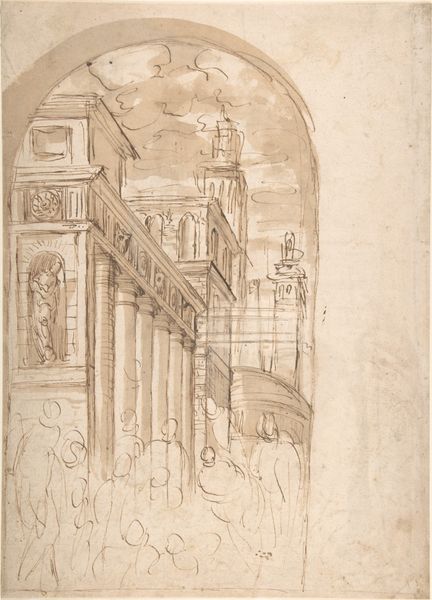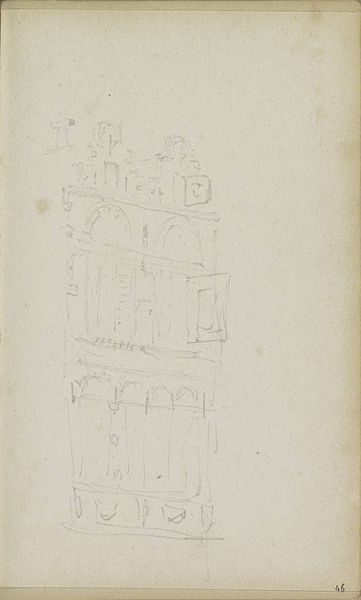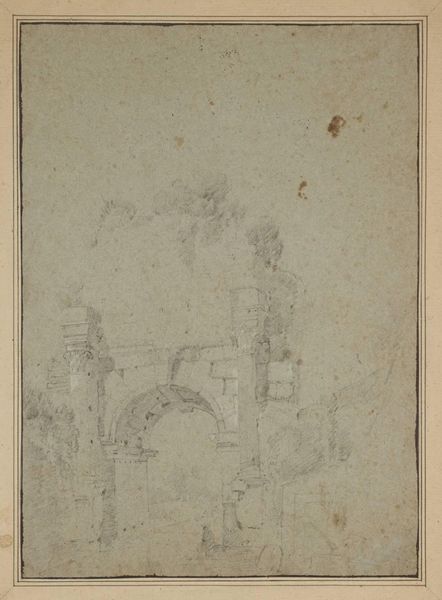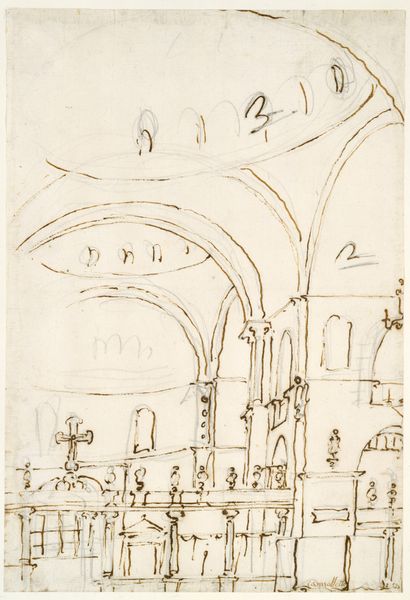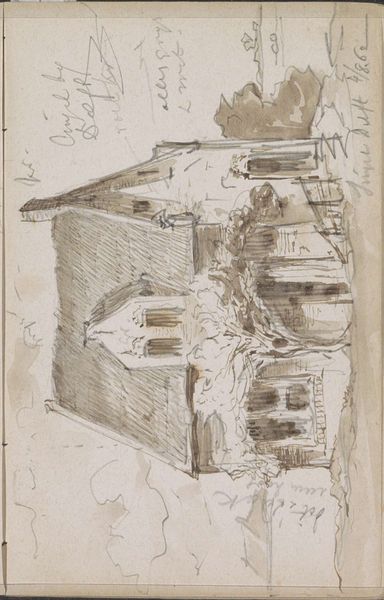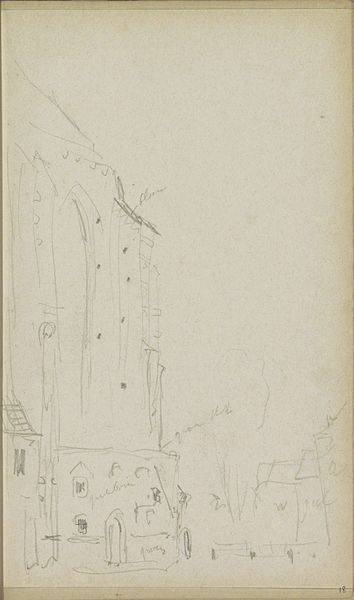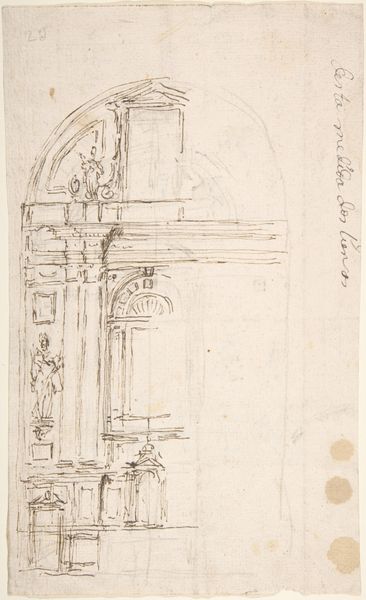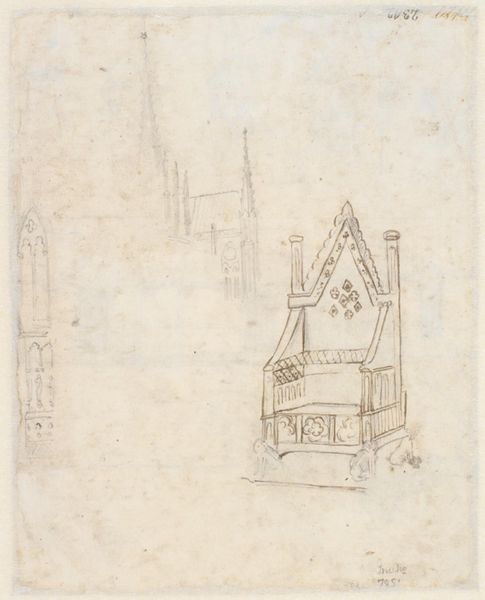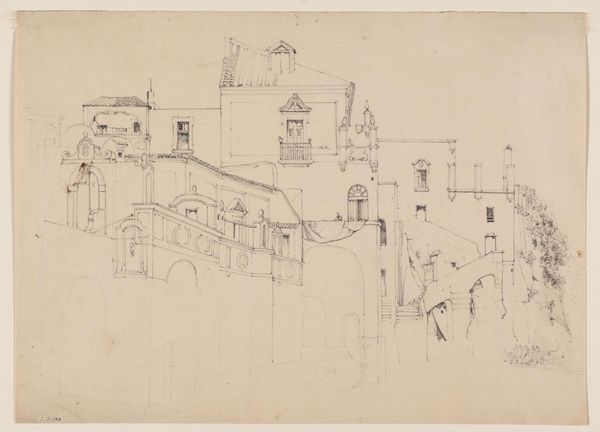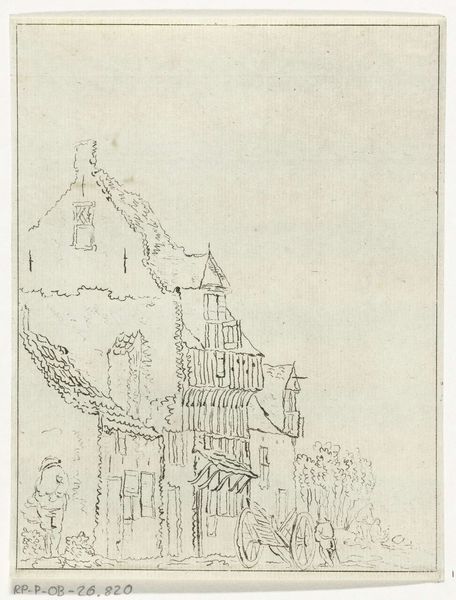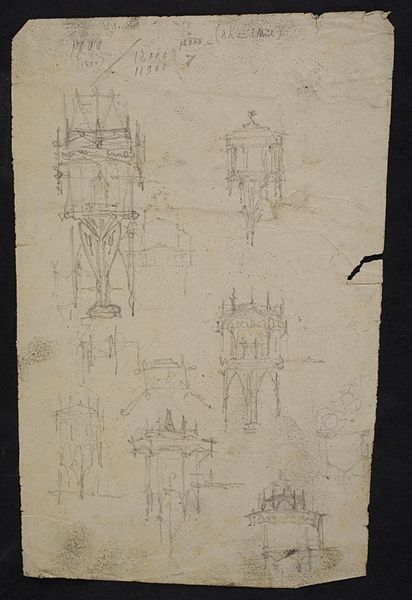
A Magnificent Pavilion by the Lagoon (recto); The Grand Canal, with the Rialto Bridge from the South (verso) 1724 - 1732
0:00
0:00
drawing, pen, architecture
#
drawing
#
baroque
#
form
#
line
#
pen
#
cityscape
#
architecture
Dimensions: 8 x 5 9/16 in. (20.3 x 14.2 cm)
Copyright: Public Domain
Editor: We’re looking at “A Magnificent Pavilion by the Lagoon” from the early 18th century, drawn with pen and brown ink by Canaletto, currently housed in the Met. The lines are so crisp, but the composition feels almost…fragmented. How do you interpret this work? Curator: This drawing offers more than just architectural documentation; it hints at Venice's complex social fabric during the Baroque period. How might this emphasis on the architectural relate to, say, the declining power of the Venetian aristocracy during this period? What stories are NOT being told within those lines? Editor: That’s interesting! So, it's less about admiring the beauty of the architecture and more about unpacking what that architecture represents politically and socially? Curator: Exactly. Canaletto meticulously depicts these structures, yes, but the question is, for whom? Wealthy patrons commissioning these to reinforce their power? Is Canaletto complicit? By meticulously detailing these decaying monuments, is he also subtly critiquing the status quo? Editor: It's almost like he’s showing us the facade, daring us to look behind it. The fragmented composition now reads as a deliberate act, perhaps highlighting the instability of that power structure. Curator: Precisely! And think about the very act of drawing in itself during this period. Who had access to this type of artistic skill and education? How did class and gender affect artistic output and perspective? What does it mean that Canaletto became a chronicler of a changing society? Editor: I see. It makes you think about the layers of privilege and power dynamics embedded within even seemingly straightforward landscapes. Thank you! Curator: My pleasure! By viewing the artwork as a cultural artifact we unveil these historical voices. It's about understanding art’s place in these systems of power.
Comments
No comments
Be the first to comment and join the conversation on the ultimate creative platform.
